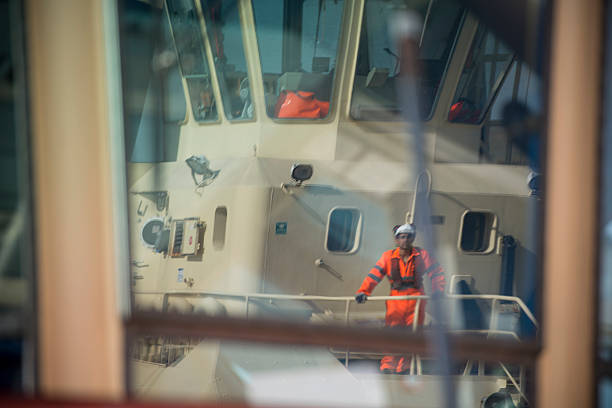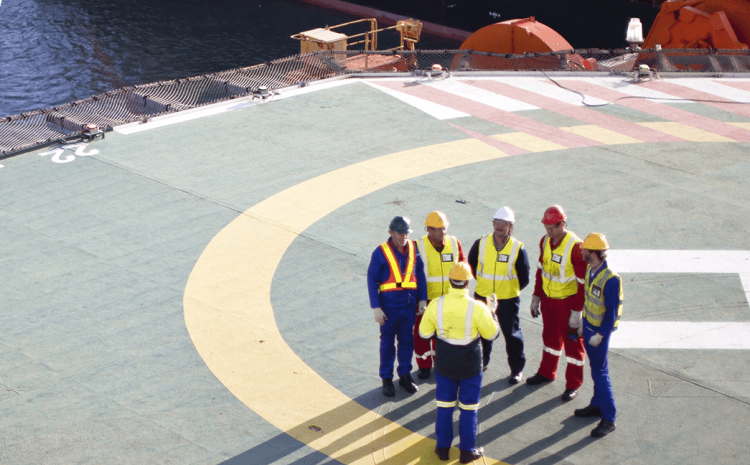Working Together in Safety: The key to shipping’s future success
The ‘Together in Safety’ coalition’s core objective is to protect seafarers’ lives, while delivering improved business efficiency and commercial effectiveness, and is fundamental to safeguarding shipping’s future success
Safety is the single most important subject for any shipping company. Getting our programmes right is imperative to future success. It goes beyond managing incidents; it is fundamental to everything we do. It’s about putting people, the employees that are the lifeblood of our companies, at the very centre of shipping and motivating them to do their very best every day.
We must develop a mindset of learning from each other, and enable teams to collaborate, generate fresh ideas, and deliver solutions. Safety enables the sustainability of the shipping industry into the future, attracts high-quality talent, and supports decarbonisation and technological improvements.
However, despite its importance, safety appears to have moved down the agenda in the shipping industry. There is a need for a new approach focusing on our people — and one that does not rely only on regulation for guidance.
Why Safety?
The most important aspect of safety is protecting the lives of seafarers. Data tells us that while there have been improvements in some sectors, the overall number of incidents and fatalities has stagnated. Shipping remains one of the world’s most hazardous industries.
Behind the data are the lives of the people that work for us. Both they, and their families and children, entrust us with their care and we are accountable. We need to look after our seafarers as if they were our own family.
An accident can cost a company dearly, both directly and indirectly. Insurance may cover some of the burden, but the company will incur losses from delays, loss of revenue, compensation costs, management time and more. Accidents can also damage the image of the company, employee wellbeing, and the reputation of the leadership team.
From another perspective, there is evidence that companies with a great safety performance record also have strong commercial performance metrics and leadership. Safety empowers staff to perform well and increases trust between the company and employees.
The Framework of Strategic Drivers
Three years ago, a new approach was developed by establishing an industry coalition called ‘Together in Safety’. The coalition comprises many of the world’s major shipping companies, as well as insurance, classification societies, and country representatives. The principal objective is to protect seafarers’ lives, while delivering improved business efficiency and commercial effectiveness.
A key building block is the ‘Framework of Strategic Drivers’, which underlines how ‘Together in Safety’ members are tackling safety issues. Shipping companies should become familiar with the framework and test for alignment with their existing programme, making adjustments as required. There are four key Strategic Drivers:
- Leadership: Visible safety leadership must stem from the top down, with the right behaviours and mindset modelled by the chief executive and management team. Starting every conversation with safety, visiting people on the front line, leading the programme and reviewing progress, taking corrective action where required.
- Incident Prevention: ‘Together in Safety’ has identified 14 categories of major incident types involving casualties or high-cost insurance claims. Proven best practices have been identified allowing companies to address those major incident types that are the most important for their activities and risk exposure.
- Wellbeing and Care: Ensuring the wellbeing and showing care is key to a developing a healthy, happy and high-performing team. ‘Together in Safety’ includes recommendations to deliver a high-quality wellbeing and care programme, and improve seafarer mental-health related aspects.
- Collaboration: Industry groups and shipping companies are combining collective knowledge and expertise for the benefit of the wider industry. Focused collaboration will provide reliable and accurate incident data, and develop solutions to deliver an improved performance.
The consortium is also working with and learning from, other industries, including air and rail, that have faced similar challenges and made significant improvements.
Safety is key to shipping’s future success. Implementing these strategies will require passion, dedication and motivation to put seafarers at the very centre of the shipping industry. Our employees are the new customer of the future; they must feel valued and cared for.
Dr Grahaeme Henderson OBE is the former Senior Vice-President, Shipping and Maritime, at Shell International Trading & Shipping Company and Chair of ‘Together in Safety’
A copy of this article appeared in Lloyds List on 1 February 2022

